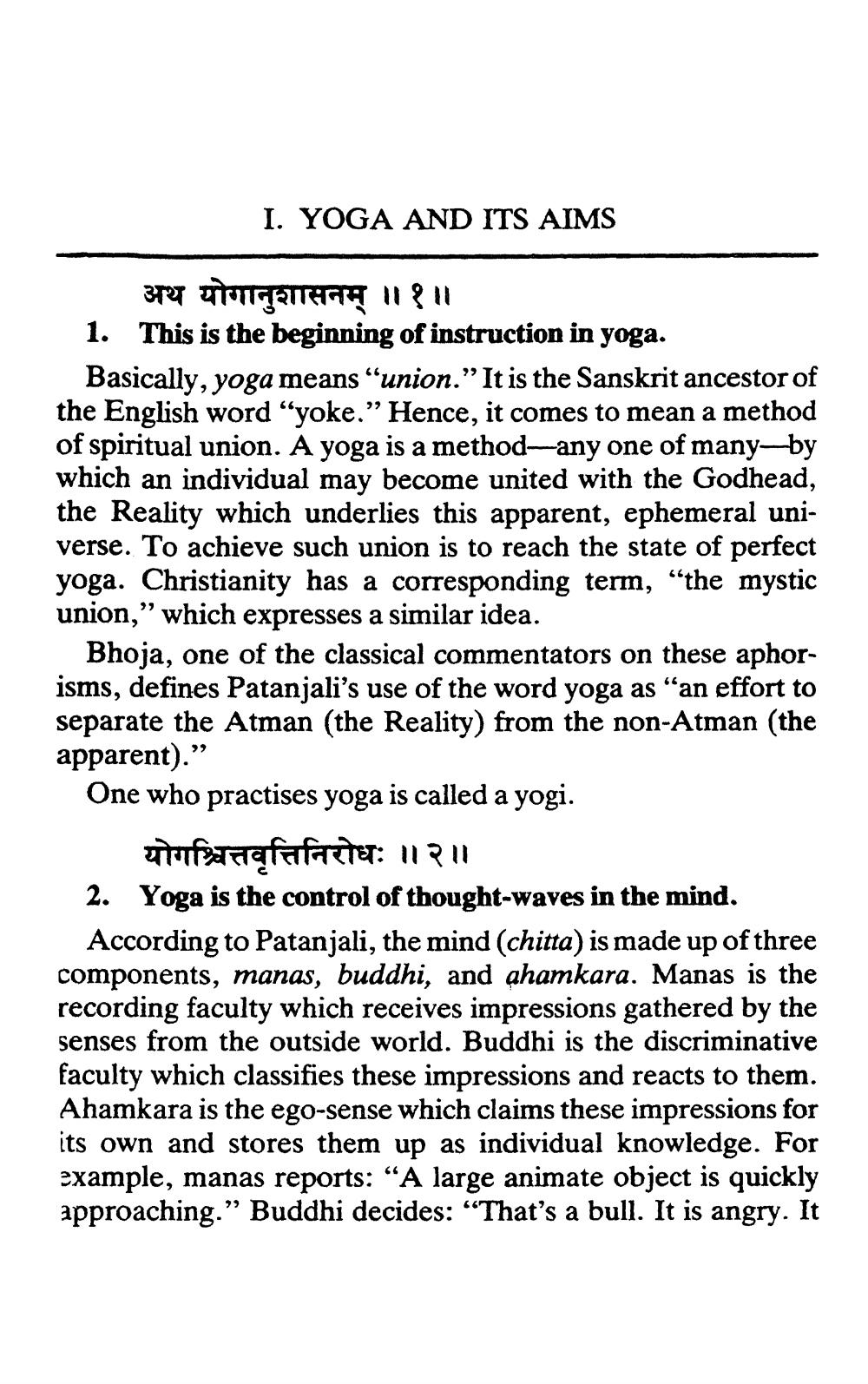Book Title: Yoga Aphorisms of Patanjali Author(s): Prabhavnanda Swami, Christopher Isherwood Publisher: Ramkrishna Math Madras View full book textPage 9
________________ I. YOGA AND ITS AIMS अथ योगानुशासनम् ॥१॥ 1. This is the beginning of instruction in yoga. Basically, yoga means "union.” It is the Sanskrit ancestor of the English word “yoke.” Hence, it comes to mean a method of spiritual union. A yoga is a method-any one of many-by which an individual may become united with the Godhead, the Reality which underlies this apparent, ephemeral universe. To achieve such union is to reach the state of perfect yoga. Christianity has a corresponding term, "the mystic union,” which expresses a similar idea. Bhoja, one of the classical commentators on these aphorisms, defines Patanjali's use of the word yoga as “an effort to separate the Atman (the Reality) from the non-Atman (the apparent).” One who practises yoga is called a yogi. Tafstaafafaretat: 11211 2. Yoga is the control of thought-waves in the mind. According to Patanjali, the mind (chitta) is made up of three components, manas, buddhi, and ahamkara. Manas is the recording faculty which receives impressions gathered by the senses from the outside world. Buddhi is the discriminative faculty which classifies these impressions and reacts to them. Ahamkara is the ego-sense which claims these impressions for its own and stores them up as individual knowledge. For example, manas reports: “A large animate object is quickly approaching.” Buddhi decides: "That's a bull. It is angry. ItPage Navigation
1 ... 7 8 9 10 11 12 13 14 15 16 17 18 19 20 21 22 23 24 25 26 27 28 29 30 31 32 33 34 35 36 37 38 39 40 41 42 43 44 45 46 47 48 49 50 51 52 53 54 55 56 57 58 59 60 61 62 63 64 65 66 67 68 69 70 71 72 73 74 75 76 77 78 79 80 81 82 83 84 85 86 87 88 89 90 91 92 ... 163
